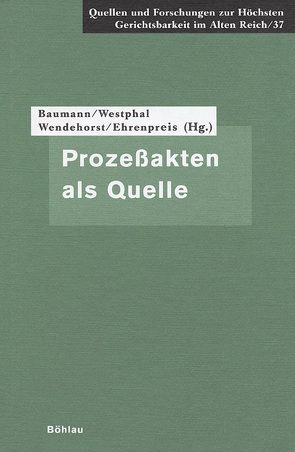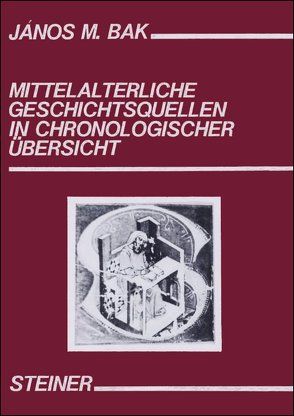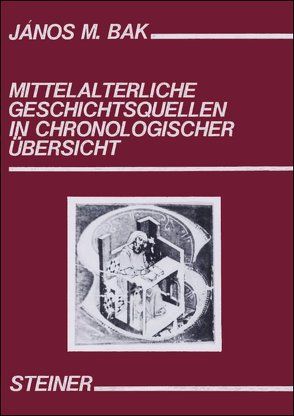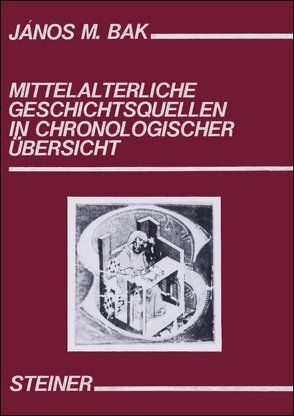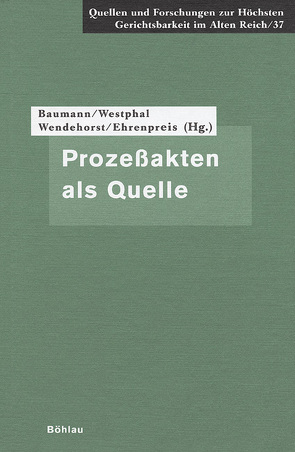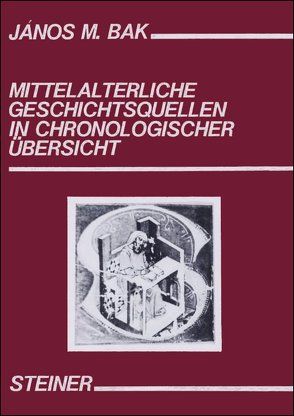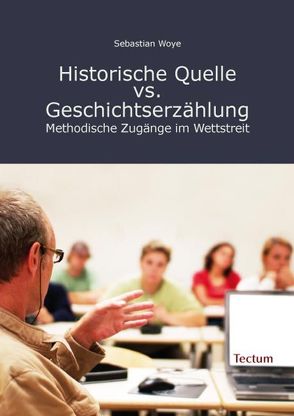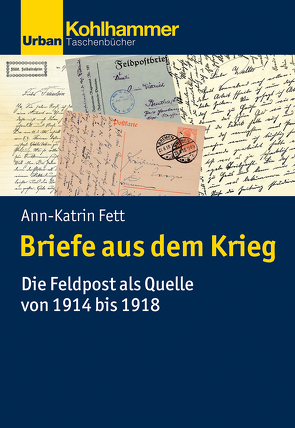
It=s difficult for us today to imagine the inhuman conditions in which soldiers fought on the various sections of the front during the First World War & historical sources such as newspaper articles, reports from the front and official announcements provide a distorted picture of the situation at the front in many respects. On the one hand, these descriptions were usually written by people who had only limited knowledge of the horrors of trench warfare. On the other, strict censorship was applied during the war in order to keep up morale among the general population. Reporting of the mood among the troops was therefore quite systematically embellished. But how did ordinary soldiers actually feel? How did their mood develop during the years of war? What did people at the front think about the decisions being taken by the government and general staff? Did the initial war euphoria last, or did increasing disillusionment set in as the terror continued? These and many other questions are of urgent interest, and not only to historians: answering them could place the First World War in a completely new light. Ann-Katrin Fett has now carried out an analysis of letters sent from the front, as a source genre that has so far received too little attention. These letters & exchanged between front-line soldiers and their loved ones at home & provide incomparable insights into the thoughts of a group of people whose testimony has otherwise scarcely featured in the historical sources. The letters reflect intimate feelings and judgements, largely without ulterior motives, and reveal both social moods and wider patterns of perception. The author investigates the way in which the brutal battles of matériel and the sight of landscapes with craters stretching across them altered contemporaries= views of death and of their own mortality, and the ways in which this was reflected in their writing. She analyses the dissonances that arose from the divergent worlds of experience on the front and at home, and the role that letters from the front played in bridging these gaps. The letters show numerous linguistic strategies for coping and invocatory speech acts that were used to establish distance from the reality of war. Distance was often expressed through omissions and playing down of events, as well as through heavy concentration on everyday and seemingly apolitical topics. Through her linguistic approach, the author succeeds in showing how people positioned themselves in their letters over several years relative to the continuing upheaval. One important finding is that the language used in letters from the front changed between 1914 and 1918. This, in turn, is used to show that there was a more general development in the history of mentality. One chapter is dedicated to each year of the war in order to make the chronological development of linguistic discourse tangible. The source material includes letters from the front and from civilians, from women and men, and from different age groups and milieus.
Aktualisiert: 2023-06-30
> findR *
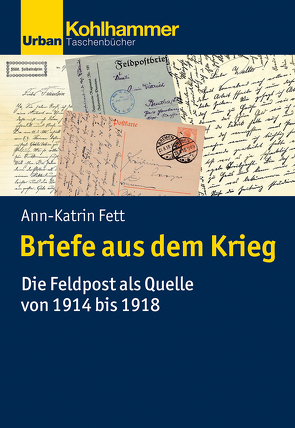
It=s difficult for us today to imagine the inhuman conditions in which soldiers fought on the various sections of the front during the First World War & historical sources such as newspaper articles, reports from the front and official announcements provide a distorted picture of the situation at the front in many respects. On the one hand, these descriptions were usually written by people who had only limited knowledge of the horrors of trench warfare. On the other, strict censorship was applied during the war in order to keep up morale among the general population. Reporting of the mood among the troops was therefore quite systematically embellished. But how did ordinary soldiers actually feel? How did their mood develop during the years of war? What did people at the front think about the decisions being taken by the government and general staff? Did the initial war euphoria last, or did increasing disillusionment set in as the terror continued? These and many other questions are of urgent interest, and not only to historians: answering them could place the First World War in a completely new light. Ann-Katrin Fett has now carried out an analysis of letters sent from the front, as a source genre that has so far received too little attention. These letters & exchanged between front-line soldiers and their loved ones at home & provide incomparable insights into the thoughts of a group of people whose testimony has otherwise scarcely featured in the historical sources. The letters reflect intimate feelings and judgements, largely without ulterior motives, and reveal both social moods and wider patterns of perception. The author investigates the way in which the brutal battles of matériel and the sight of landscapes with craters stretching across them altered contemporaries= views of death and of their own mortality, and the ways in which this was reflected in their writing. She analyses the dissonances that arose from the divergent worlds of experience on the front and at home, and the role that letters from the front played in bridging these gaps. The letters show numerous linguistic strategies for coping and invocatory speech acts that were used to establish distance from the reality of war. Distance was often expressed through omissions and playing down of events, as well as through heavy concentration on everyday and seemingly apolitical topics. Through her linguistic approach, the author succeeds in showing how people positioned themselves in their letters over several years relative to the continuing upheaval. One important finding is that the language used in letters from the front changed between 1914 and 1918. This, in turn, is used to show that there was a more general development in the history of mentality. One chapter is dedicated to each year of the war in order to make the chronological development of linguistic discourse tangible. The source material includes letters from the front and from civilians, from women and men, and from different age groups and milieus.
Aktualisiert: 2023-06-30
> findR *
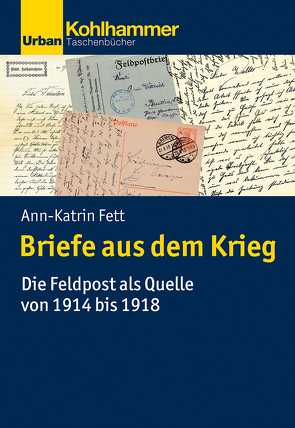
It=s difficult for us today to imagine the inhuman conditions in which soldiers fought on the various sections of the front during the First World War & historical sources such as newspaper articles, reports from the front and official announcements provide a distorted picture of the situation at the front in many respects. On the one hand, these descriptions were usually written by people who had only limited knowledge of the horrors of trench warfare. On the other, strict censorship was applied during the war in order to keep up morale among the general population. Reporting of the mood among the troops was therefore quite systematically embellished. But how did ordinary soldiers actually feel? How did their mood develop during the years of war? What did people at the front think about the decisions being taken by the government and general staff? Did the initial war euphoria last, or did increasing disillusionment set in as the terror continued? These and many other questions are of urgent interest, and not only to historians: answering them could place the First World War in a completely new light. Ann-Katrin Fett has now carried out an analysis of letters sent from the front, as a source genre that has so far received too little attention. These letters & exchanged between front-line soldiers and their loved ones at home & provide incomparable insights into the thoughts of a group of people whose testimony has otherwise scarcely featured in the historical sources. The letters reflect intimate feelings and judgements, largely without ulterior motives, and reveal both social moods and wider patterns of perception. The author investigates the way in which the brutal battles of matériel and the sight of landscapes with craters stretching across them altered contemporaries= views of death and of their own mortality, and the ways in which this was reflected in their writing. She analyses the dissonances that arose from the divergent worlds of experience on the front and at home, and the role that letters from the front played in bridging these gaps. The letters show numerous linguistic strategies for coping and invocatory speech acts that were used to establish distance from the reality of war. Distance was often expressed through omissions and playing down of events, as well as through heavy concentration on everyday and seemingly apolitical topics. Through her linguistic approach, the author succeeds in showing how people positioned themselves in their letters over several years relative to the continuing upheaval. One important finding is that the language used in letters from the front changed between 1914 and 1918. This, in turn, is used to show that there was a more general development in the history of mentality. One chapter is dedicated to each year of the war in order to make the chronological development of linguistic discourse tangible. The source material includes letters from the front and from civilians, from women and men, and from different age groups and milieus.
Aktualisiert: 2023-06-30
> findR *
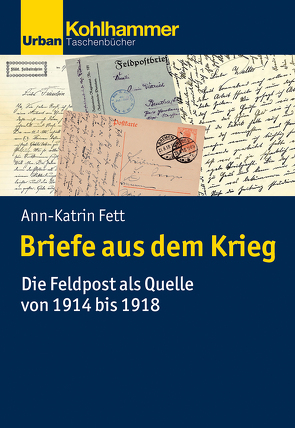
It=s difficult for us today to imagine the inhuman conditions in which soldiers fought on the various sections of the front during the First World War & historical sources such as newspaper articles, reports from the front and official announcements provide a distorted picture of the situation at the front in many respects. On the one hand, these descriptions were usually written by people who had only limited knowledge of the horrors of trench warfare. On the other, strict censorship was applied during the war in order to keep up morale among the general population. Reporting of the mood among the troops was therefore quite systematically embellished. But how did ordinary soldiers actually feel? How did their mood develop during the years of war? What did people at the front think about the decisions being taken by the government and general staff? Did the initial war euphoria last, or did increasing disillusionment set in as the terror continued? These and many other questions are of urgent interest, and not only to historians: answering them could place the First World War in a completely new light. Ann-Katrin Fett has now carried out an analysis of letters sent from the front, as a source genre that has so far received too little attention. These letters & exchanged between front-line soldiers and their loved ones at home & provide incomparable insights into the thoughts of a group of people whose testimony has otherwise scarcely featured in the historical sources. The letters reflect intimate feelings and judgements, largely without ulterior motives, and reveal both social moods and wider patterns of perception. The author investigates the way in which the brutal battles of matériel and the sight of landscapes with craters stretching across them altered contemporaries= views of death and of their own mortality, and the ways in which this was reflected in their writing. She analyses the dissonances that arose from the divergent worlds of experience on the front and at home, and the role that letters from the front played in bridging these gaps. The letters show numerous linguistic strategies for coping and invocatory speech acts that were used to establish distance from the reality of war. Distance was often expressed through omissions and playing down of events, as well as through heavy concentration on everyday and seemingly apolitical topics. Through her linguistic approach, the author succeeds in showing how people positioned themselves in their letters over several years relative to the continuing upheaval. One important finding is that the language used in letters from the front changed between 1914 and 1918. This, in turn, is used to show that there was a more general development in the history of mentality. One chapter is dedicated to each year of the war in order to make the chronological development of linguistic discourse tangible. The source material includes letters from the front and from civilians, from women and men, and from different age groups and milieus.
Aktualisiert: 2023-06-30
> findR *
Die Beiträge befassen sich mit den methodischen Zugängen zu den Prozessakten der Höchsten Gerichte im Alten Reich. Dabei wurde ein fächerübergreifender Ansatz gewählt, so dass nicht nur Historiker und Rechtshistoriker, sondern auch Mentalitätsforscher, historische Kartographen sowie Archivare zu Wort kommen. So werden neben einer konkreten Falluntersuchung die Rechtsprechung des Reichskammergerichts im 16. und 17. Jahrhundert und ihre methodischen Probleme der Rekonstruktion untersucht. Weitere Themen sind die Protokolle von Zeugenverhören am Reichskammergericht als historische Quellen sowie die Prozesskarten in den Reichskammergerichtsakten. Begleitet wird der Band von einem einleitenden Forschungsüberblick sowie englischen Zusammenfassungen der einzelnen Beiträge.
Aktualisiert: 2023-06-28
> findR *
„B's Übersicht kann und will nicht den ,alten‘ oder ,neuen‘ (sowieso noch unvollständigen) Potthast ersetzen. Es gibt hier vohl kein Kriterium, das zwangsläufig schlüssiger ist als die Subjektivität eines besonnenen und hinsichtlich der Bedürfnisse von Studenten erfahrenen Auslesers. Dieses ist auf geglückte und nutzbringende Weise erfüllt worden.“
Aktualisiert: 2023-06-15
> findR *
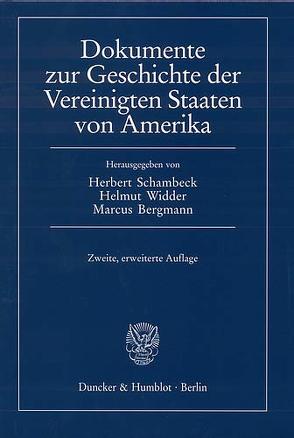
Die anlässlich des Kolumbus-Jahres im Jahre 1993 erschienene 1. Auflage dieser Anthologie hatte das Ziel, durch einen Rückblick auf die Geschichte der USA die Entwicklung der Vereinigten Staaten anhand wichtiger politischer und rechtlicher Dokumente nachzuzeichnen. Die lange demokratische Geschichte der USA im historischen Spannungsfeld zwischen Individuum, Staat und Religion wird in dieser Sammlung mit zum Teil erstmals in deutscher Sprache veröffentlichten Zeugnissen dokumentiert.
Die Geschichte ist Erklärung der Gegenwart und Wegweiser für die Zukunft - diesem Gedanken trägt die besondere Auswahl der Herausgeber Rechnung. Sie versammeln in diesem Werk neben "klassischen" Dokumenten auch seltenere Schriftstücke, die gleichwohl Marksteine der amerikanischen (Verfassungs-)Geschichte darstellen.
Die zweite, erweiterte Auflage der Anthologie enthält, jeweils mit einleitenden Texten versehen, neben den ursprünglich 150 Dokumenten der 1. Auflage 26 neue Dokumente. Darunter finden sich hauptsächlich solche, die in die Ära der Präsidenten Bill Clinton (z. B. Impeachmentverfahren) und George W. Bush fallen. Vor allem durch den "Kampf gegen den Terror" kommt einzelnen neu aufgenommenen Dokumenten - wie z. B. dem Patriot Act, der Nationalen Sicherheitsstrategie, dem Heimatschutzgesetz - nicht nur inneramerikanische sondern auch besondere internationale Relevanz zu. Andere Dokumente zeigen wiederum die geänderte Rolle der USA in den Beziehungen zur internationalen Staatengemeinschaft und speziell zu Europa. Wieder andere betreffen alte und neue Fragen der Menschenrechte - wie z. B. Todesstrafe, Behandlung terrorverdächtigter Häftlinge und Aufarbeitung rassistischer Gewalt.
Aktualisiert: 2023-06-15
> findR *
„B's Übersicht kann und will nicht den ,alten‘ oder ,neuen‘ (sowieso noch unvollständigen) Potthast ersetzen. Es gibt hier vohl kein Kriterium, das zwangsläufig schlüssiger ist als die Subjektivität eines besonnenen und hinsichtlich der Bedürfnisse von Studenten erfahrenen Auslesers. Dieses ist auf geglückte und nutzbringende Weise erfüllt worden.“
Aktualisiert: 2023-06-07
> findR *
„B's Übersicht kann und will nicht den ,alten‘ oder ,neuen‘ (sowieso noch unvollständigen) Potthast ersetzen. Es gibt hier vohl kein Kriterium, das zwangsläufig schlüssiger ist als die Subjektivität eines besonnenen und hinsichtlich der Bedürfnisse von Studenten erfahrenen Auslesers. Dieses ist auf geglückte und nutzbringende Weise erfüllt worden.“
Aktualisiert: 2023-06-01
> findR *
Die Beiträge befassen sich mit den methodischen Zugängen zu den Prozessakten der Höchsten Gerichte im Alten Reich. Dabei wurde ein fächerübergreifender Ansatz gewählt, so dass nicht nur Historiker und Rechtshistoriker, sondern auch Mentalitätsforscher, historische Kartographen sowie Archivare zu Wort kommen. So werden neben einer konkreten Falluntersuchung die Rechtsprechung des Reichskammergerichts im 16. und 17. Jahrhundert und ihre methodischen Probleme der Rekonstruktion untersucht. Weitere Themen sind die Protokolle von Zeugenverhören am Reichskammergericht als historische Quellen sowie die Prozesskarten in den Reichskammergerichtsakten. Begleitet wird der Band von einem einleitenden Forschungsüberblick sowie englischen Zusammenfassungen der einzelnen Beiträge.
Aktualisiert: 2023-05-28
> findR *
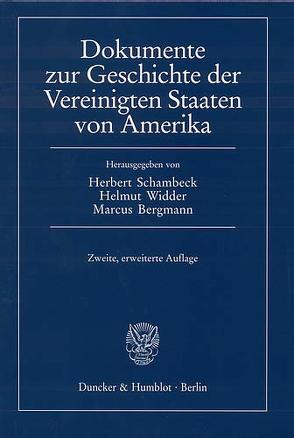
Die anlässlich des Kolumbus-Jahres im Jahre 1993 erschienene 1. Auflage dieser Anthologie hatte das Ziel, durch einen Rückblick auf die Geschichte der USA die Entwicklung der Vereinigten Staaten anhand wichtiger politischer und rechtlicher Dokumente nachzuzeichnen. Die lange demokratische Geschichte der USA im historischen Spannungsfeld zwischen Individuum, Staat und Religion wird in dieser Sammlung mit zum Teil erstmals in deutscher Sprache veröffentlichten Zeugnissen dokumentiert.
Die Geschichte ist Erklärung der Gegenwart und Wegweiser für die Zukunft - diesem Gedanken trägt die besondere Auswahl der Herausgeber Rechnung. Sie versammeln in diesem Werk neben "klassischen" Dokumenten auch seltenere Schriftstücke, die gleichwohl Marksteine der amerikanischen (Verfassungs-)Geschichte darstellen.
Die zweite, erweiterte Auflage der Anthologie enthält, jeweils mit einleitenden Texten versehen, neben den ursprünglich 150 Dokumenten der 1. Auflage 26 neue Dokumente. Darunter finden sich hauptsächlich solche, die in die Ära der Präsidenten Bill Clinton (z. B. Impeachmentverfahren) und George W. Bush fallen. Vor allem durch den "Kampf gegen den Terror" kommt einzelnen neu aufgenommenen Dokumenten - wie z. B. dem Patriot Act, der Nationalen Sicherheitsstrategie, dem Heimatschutzgesetz - nicht nur inneramerikanische sondern auch besondere internationale Relevanz zu. Andere Dokumente zeigen wiederum die geänderte Rolle der USA in den Beziehungen zur internationalen Staatengemeinschaft und speziell zu Europa. Wieder andere betreffen alte und neue Fragen der Menschenrechte - wie z. B. Todesstrafe, Behandlung terrorverdächtigter Häftlinge und Aufarbeitung rassistischer Gewalt.
Aktualisiert: 2023-05-25
> findR *
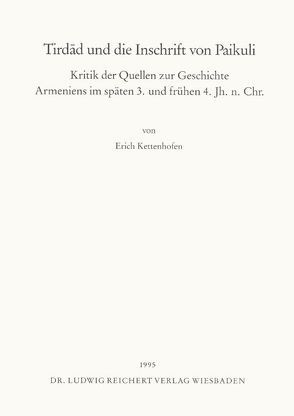
Der persische König Narseh hat in einer zweisprachigen Inschrift in mittelpersischer und parthischer Sprache im Jahre 293/294 geschildert, wie er seinen Großneffen im Kampf um den Thron ausschaltete. Unter jenen Herrschern, die ihn während dieser Auseinandersetzung unterstützten und ihn als rechtmäßigen „König der Könige von Iran“ anerkannten, nannte er auch den König Tirdad. Ist dieser identisch mit jenem König Trdat der armenischen Überlieferung, der noch vor Konstantin dem Großen zum Christentum bekehrt wurde und anschließend das Christentum in Armenien als Staatsreligion einführte?Die vorliegende Arbeit berührt damit eine weitreichende Problematik. Erstmals wird der Text der Inschrift von Paikuli für die Frage der Christianisierung Armeniens herangezogen und ausgewertet. Die altarmenischen Zeugnisse liefern keinen Beweis für die Priorität der „Konversion“ des Königs, auch wenn nicht ausgeschlossen werden kann, dass das Christentum vereinzelt bereits im 2. und 3. Jahrhundert Fuß fasste. Von einer massenhaften Bekehrung zu einem Zeitpunkt vor 300 n.Chr. kann jedoch keine Rede sein. Dennoch liefert diese Arbeit einen wichtigen Beitrag zur Erforschung der Geschichte Armeniens im 3. und frühen 4. Jahrhundert, auch im Verhältnis zu Rom und dem Perserreich.
Aktualisiert: 2023-05-16
> findR *
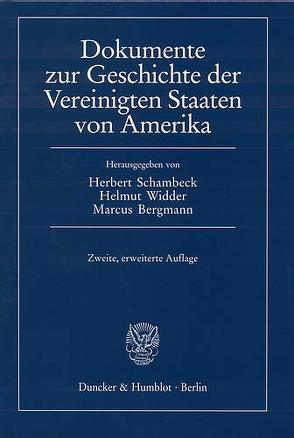
Die anlässlich des Kolumbus-Jahres im Jahre 1993 erschienene 1. Auflage dieser Anthologie hatte das Ziel, durch einen Rückblick auf die Geschichte der USA die Entwicklung der Vereinigten Staaten anhand wichtiger politischer und rechtlicher Dokumente nachzuzeichnen. Die lange demokratische Geschichte der USA im historischen Spannungsfeld zwischen Individuum, Staat und Religion wird in dieser Sammlung mit zum Teil erstmals in deutscher Sprache veröffentlichten Zeugnissen dokumentiert.
Die Geschichte ist Erklärung der Gegenwart und Wegweiser für die Zukunft - diesem Gedanken trägt die besondere Auswahl der Herausgeber Rechnung. Sie versammeln in diesem Werk neben "klassischen" Dokumenten auch seltenere Schriftstücke, die gleichwohl Marksteine der amerikanischen (Verfassungs-)Geschichte darstellen.
Die zweite, erweiterte Auflage der Anthologie enthält, jeweils mit einleitenden Texten versehen, neben den ursprünglich 150 Dokumenten der 1. Auflage 26 neue Dokumente. Darunter finden sich hauptsächlich solche, die in die Ära der Präsidenten Bill Clinton (z. B. Impeachmentverfahren) und George W. Bush fallen. Vor allem durch den "Kampf gegen den Terror" kommt einzelnen neu aufgenommenen Dokumenten - wie z. B. dem Patriot Act, der Nationalen Sicherheitsstrategie, dem Heimatschutzgesetz - nicht nur inneramerikanische sondern auch besondere internationale Relevanz zu. Andere Dokumente zeigen wiederum die geänderte Rolle der USA in den Beziehungen zur internationalen Staatengemeinschaft und speziell zu Europa. Wieder andere betreffen alte und neue Fragen der Menschenrechte - wie z. B. Todesstrafe, Behandlung terrorverdächtigter Häftlinge und Aufarbeitung rassistischer Gewalt.
Aktualisiert: 2023-05-15
> findR *
„B's Übersicht kann und will nicht den ,alten‘ oder ,neuen‘ (sowieso noch unvollständigen) Potthast ersetzen. Es gibt hier vohl kein Kriterium, das zwangsläufig schlüssiger ist als die Subjektivität eines besonnenen und hinsichtlich der Bedürfnisse von Studenten erfahrenen Auslesers. Dieses ist auf geglückte und nutzbringende Weise erfüllt worden.“
Aktualisiert: 2023-05-13
> findR *
Das Didascalicon de studio legendi ist eine wichtige und bekannte Wissenschaftssystematik der Frühscholastik. Die Thematik umfaßt dabei geistliche und weltliche Gebiete und reicht von der Theorie philosophischer Erörterungen bis zur Praxis der Medizin, des Ackerbaus, ja sogar der Tuchherstellung (lanificium). Daneben erörtert der Autor, welche Eigenschaften und Lerntechniken für ein erfolgreiches Studium nötig sind, und welche ethische Grundhaltung des Schülers wünschenswert ist. Hugo von St. Viktor trägt seinen umfangreichen Stoff aus vielfältigen Quellen zusammen, vom griechischen Philosophen Platon über römische antike und spätantike Schriftsteller und Kirchenväter bis zu frühmittelalterlichen Autoren wie Johannes Scottus Eriugena. Am ausgiebigsten benutzt er Boethius, den er auch namentlich zitiert, Isidor von Sevilla und die Bibelkommentare des Hieronymus.
Aktualisiert: 2022-12-31
> findR *
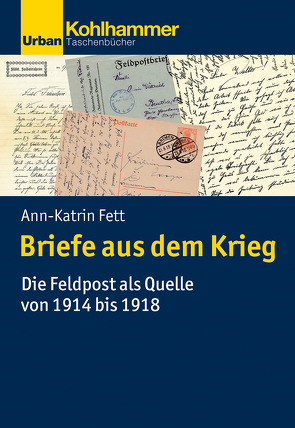
It=s difficult for us today to imagine the inhuman conditions in which soldiers fought on the various sections of the front during the First World War & historical sources such as newspaper articles, reports from the front and official announcements provide a distorted picture of the situation at the front in many respects. On the one hand, these descriptions were usually written by people who had only limited knowledge of the horrors of trench warfare. On the other, strict censorship was applied during the war in order to keep up morale among the general population. Reporting of the mood among the troops was therefore quite systematically embellished. But how did ordinary soldiers actually feel? How did their mood develop during the years of war? What did people at the front think about the decisions being taken by the government and general staff? Did the initial war euphoria last, or did increasing disillusionment set in as the terror continued? These and many other questions are of urgent interest, and not only to historians: answering them could place the First World War in a completely new light. Ann-Katrin Fett has now carried out an analysis of letters sent from the front, as a source genre that has so far received too little attention. These letters & exchanged between front-line soldiers and their loved ones at home & provide incomparable insights into the thoughts of a group of people whose testimony has otherwise scarcely featured in the historical sources. The letters reflect intimate feelings and judgements, largely without ulterior motives, and reveal both social moods and wider patterns of perception. The author investigates the way in which the brutal battles of matériel and the sight of landscapes with craters stretching across them altered contemporaries= views of death and of their own mortality, and the ways in which this was reflected in their writing. She analyses the dissonances that arose from the divergent worlds of experience on the front and at home, and the role that letters from the front played in bridging these gaps. The letters show numerous linguistic strategies for coping and invocatory speech acts that were used to establish distance from the reality of war. Distance was often expressed through omissions and playing down of events, as well as through heavy concentration on everyday and seemingly apolitical topics. Through her linguistic approach, the author succeeds in showing how people positioned themselves in their letters over several years relative to the continuing upheaval. One important finding is that the language used in letters from the front changed between 1914 and 1918. This, in turn, is used to show that there was a more general development in the history of mentality. One chapter is dedicated to each year of the war in order to make the chronological development of linguistic discourse tangible. The source material includes letters from the front and from civilians, from women and men, and from different age groups and milieus.
Aktualisiert: 2023-05-05
> findR *
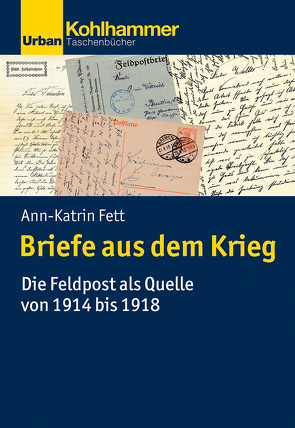
It=s difficult for us today to imagine the inhuman conditions in which soldiers fought on the various sections of the front during the First World War & historical sources such as newspaper articles, reports from the front and official announcements provide a distorted picture of the situation at the front in many respects. On the one hand, these descriptions were usually written by people who had only limited knowledge of the horrors of trench warfare. On the other, strict censorship was applied during the war in order to keep up morale among the general population. Reporting of the mood among the troops was therefore quite systematically embellished. But how did ordinary soldiers actually feel? How did their mood develop during the years of war? What did people at the front think about the decisions being taken by the government and general staff? Did the initial war euphoria last, or did increasing disillusionment set in as the terror continued? These and many other questions are of urgent interest, and not only to historians: answering them could place the First World War in a completely new light. Ann-Katrin Fett has now carried out an analysis of letters sent from the front, as a source genre that has so far received too little attention. These letters & exchanged between front-line soldiers and their loved ones at home & provide incomparable insights into the thoughts of a group of people whose testimony has otherwise scarcely featured in the historical sources. The letters reflect intimate feelings and judgements, largely without ulterior motives, and reveal both social moods and wider patterns of perception. The author investigates the way in which the brutal battles of matériel and the sight of landscapes with craters stretching across them altered contemporaries= views of death and of their own mortality, and the ways in which this was reflected in their writing. She analyses the dissonances that arose from the divergent worlds of experience on the front and at home, and the role that letters from the front played in bridging these gaps. The letters show numerous linguistic strategies for coping and invocatory speech acts that were used to establish distance from the reality of war. Distance was often expressed through omissions and playing down of events, as well as through heavy concentration on everyday and seemingly apolitical topics. Through her linguistic approach, the author succeeds in showing how people positioned themselves in their letters over several years relative to the continuing upheaval. One important finding is that the language used in letters from the front changed between 1914 and 1918. This, in turn, is used to show that there was a more general development in the history of mentality. One chapter is dedicated to each year of the war in order to make the chronological development of linguistic discourse tangible. The source material includes letters from the front and from civilians, from women and men, and from different age groups and milieus.
Aktualisiert: 2023-05-05
> findR *

It=s difficult for us today to imagine the inhuman conditions in which soldiers fought on the various sections of the front during the First World War & historical sources such as newspaper articles, reports from the front and official announcements provide a distorted picture of the situation at the front in many respects. On the one hand, these descriptions were usually written by people who had only limited knowledge of the horrors of trench warfare. On the other, strict censorship was applied during the war in order to keep up morale among the general population. Reporting of the mood among the troops was therefore quite systematically embellished. But how did ordinary soldiers actually feel? How did their mood develop during the years of war? What did people at the front think about the decisions being taken by the government and general staff? Did the initial war euphoria last, or did increasing disillusionment set in as the terror continued? These and many other questions are of urgent interest, and not only to historians: answering them could place the First World War in a completely new light. Ann-Katrin Fett has now carried out an analysis of letters sent from the front, as a source genre that has so far received too little attention. These letters & exchanged between front-line soldiers and their loved ones at home & provide incomparable insights into the thoughts of a group of people whose testimony has otherwise scarcely featured in the historical sources. The letters reflect intimate feelings and judgements, largely without ulterior motives, and reveal both social moods and wider patterns of perception. The author investigates the way in which the brutal battles of matériel and the sight of landscapes with craters stretching across them altered contemporaries= views of death and of their own mortality, and the ways in which this was reflected in their writing. She analyses the dissonances that arose from the divergent worlds of experience on the front and at home, and the role that letters from the front played in bridging these gaps. The letters show numerous linguistic strategies for coping and invocatory speech acts that were used to establish distance from the reality of war. Distance was often expressed through omissions and playing down of events, as well as through heavy concentration on everyday and seemingly apolitical topics. Through her linguistic approach, the author succeeds in showing how people positioned themselves in their letters over several years relative to the continuing upheaval. One important finding is that the language used in letters from the front changed between 1914 and 1918. This, in turn, is used to show that there was a more general development in the history of mentality. One chapter is dedicated to each year of the war in order to make the chronological development of linguistic discourse tangible. The source material includes letters from the front and from civilians, from women and men, and from different age groups and milieus.
Aktualisiert: 2023-05-05
> findR *
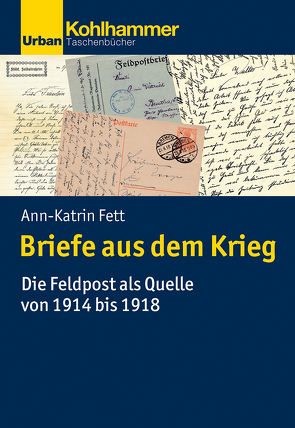
It=s difficult for us today to imagine the inhuman conditions in which soldiers fought on the various sections of the front during the First World War & historical sources such as newspaper articles, reports from the front and official announcements provide a distorted picture of the situation at the front in many respects. On the one hand, these descriptions were usually written by people who had only limited knowledge of the horrors of trench warfare. On the other, strict censorship was applied during the war in order to keep up morale among the general population. Reporting of the mood among the troops was therefore quite systematically embellished. But how did ordinary soldiers actually feel? How did their mood develop during the years of war? What did people at the front think about the decisions being taken by the government and general staff? Did the initial war euphoria last, or did increasing disillusionment set in as the terror continued? These and many other questions are of urgent interest, and not only to historians: answering them could place the First World War in a completely new light. Ann-Katrin Fett has now carried out an analysis of letters sent from the front, as a source genre that has so far received too little attention. These letters & exchanged between front-line soldiers and their loved ones at home & provide incomparable insights into the thoughts of a group of people whose testimony has otherwise scarcely featured in the historical sources. The letters reflect intimate feelings and judgements, largely without ulterior motives, and reveal both social moods and wider patterns of perception. The author investigates the way in which the brutal battles of matériel and the sight of landscapes with craters stretching across them altered contemporaries= views of death and of their own mortality, and the ways in which this was reflected in their writing. She analyses the dissonances that arose from the divergent worlds of experience on the front and at home, and the role that letters from the front played in bridging these gaps. The letters show numerous linguistic strategies for coping and invocatory speech acts that were used to establish distance from the reality of war. Distance was often expressed through omissions and playing down of events, as well as through heavy concentration on everyday and seemingly apolitical topics. Through her linguistic approach, the author succeeds in showing how people positioned themselves in their letters over several years relative to the continuing upheaval. One important finding is that the language used in letters from the front changed between 1914 and 1918. This, in turn, is used to show that there was a more general development in the history of mentality. One chapter is dedicated to each year of the war in order to make the chronological development of linguistic discourse tangible. The source material includes letters from the front and from civilians, from women and men, and from different age groups and milieus.
Aktualisiert: 2023-04-04
> findR *
Soll die historische Quelle oder die Geschichtserzählung als Zugang zum Geschichtsunterricht erste Wahl des Lehrers sein? Welcher methodische Einstieg kann im aktuellen Unterrichtsgeschehen die Vorgaben für historisches Lernen verwirklichen? Geschichtsdidaktiker haben die Thematik lange und mit wechselnden Vorzeichen diskutiert. Jede Generation entwickelte neue Einstellungen, Einsichten, wissenschaftliche Fortschritte und strebte nach Veränderung. Vor allem die historisch-gesellschaftlichen Einschnitte in der jüngsten Geschichte selbst beeinflussten die Didaktik und ihre Methodik – gerade im Geschichtsunterricht. Die Entwicklung der Diskussion über Geschichtsquelle vs. Geschichtserzählung spiegelt mithin die gesellschaftlichen und politischen Zustände der jeweiligen Zeit wider.
Aktualisiert: 2020-11-16
> findR *
MEHR ANZEIGEN
Bücher zum Thema Geschichtsquelle
Sie suchen ein Buch über Geschichtsquelle? Bei Buch findr finden Sie eine große Auswahl Bücher zum
Thema Geschichtsquelle. Entdecken Sie neue Bücher oder Klassiker für Sie selbst oder zum Verschenken. Buch findr
hat zahlreiche Bücher zum Thema Geschichtsquelle im Sortiment. Nehmen Sie sich Zeit zum Stöbern und finden Sie das
passende Buch für Ihr Lesevergnügen. Stöbern Sie durch unser Angebot und finden Sie aus unserer großen Auswahl das
Buch, das Ihnen zusagt. Bei Buch findr finden Sie Romane, Ratgeber, wissenschaftliche und populärwissenschaftliche
Bücher uvm. Bestellen Sie Ihr Buch zum Thema Geschichtsquelle einfach online und lassen Sie es sich bequem nach
Hause schicken. Wir wünschen Ihnen schöne und entspannte Lesemomente mit Ihrem Buch.
Geschichtsquelle - Große Auswahl Bücher bei Buch findr
Bei uns finden Sie Bücher beliebter Autoren, Neuerscheinungen, Bestseller genauso wie alte Schätze. Bücher zum
Thema Geschichtsquelle, die Ihre Fantasie anregen und Bücher, die Sie weiterbilden und Ihnen wissenschaftliche
Fakten vermitteln. Ganz nach Ihrem Geschmack ist das passende Buch für Sie dabei. Finden Sie eine große Auswahl
Bücher verschiedenster Genres, Verlage, Autoren bei Buchfindr:
Sie haben viele Möglichkeiten bei Buch findr die passenden Bücher für Ihr Lesevergnügen zu entdecken. Nutzen Sie
unsere Suchfunktionen, um zu stöbern und für Sie interessante Bücher in den unterschiedlichen Genres und Kategorien
zu finden. Unter Geschichtsquelle und weitere Themen und Kategorien finden Sie schnell und einfach eine Auflistung
thematisch passender Bücher. Probieren Sie es aus, legen Sie jetzt los! Ihrem Lesevergnügen steht nichts im Wege.
Nutzen Sie die Vorteile Ihre Bücher online zu kaufen und bekommen Sie die bestellten Bücher schnell und bequem
zugestellt. Nehmen Sie sich die Zeit, online die Bücher Ihrer Wahl anzulesen, Buchempfehlungen und Rezensionen zu
studieren, Informationen zu Autoren zu lesen. Viel Spaß beim Lesen wünscht Ihnen das Team von Buchfindr.




